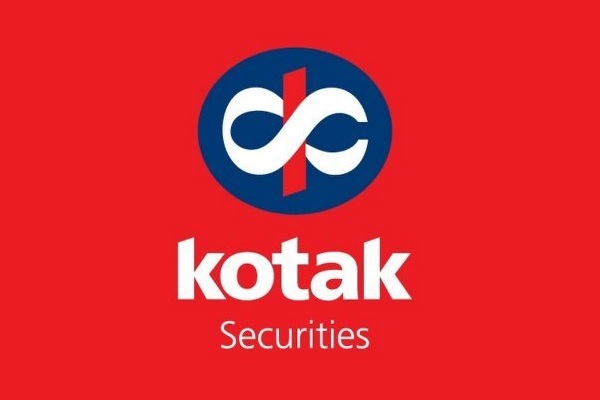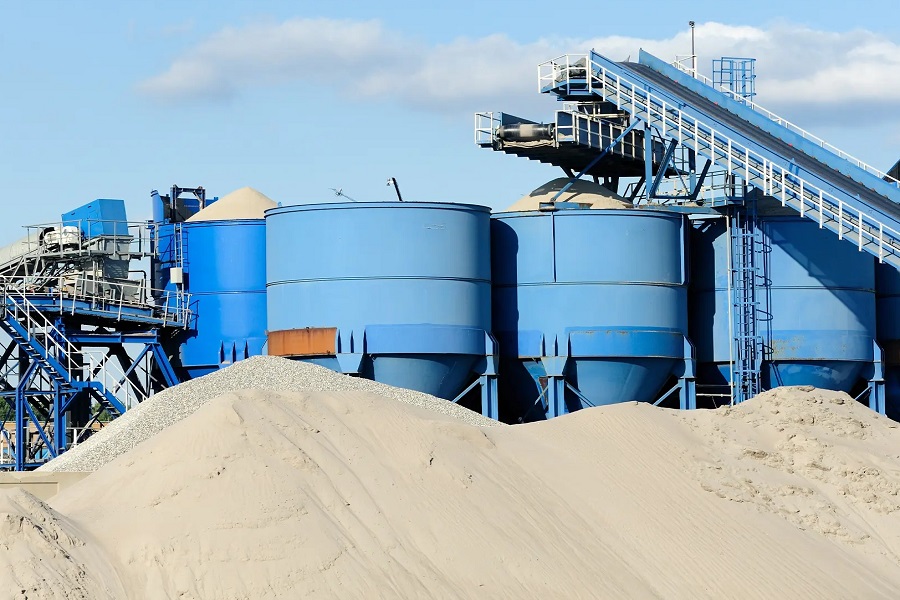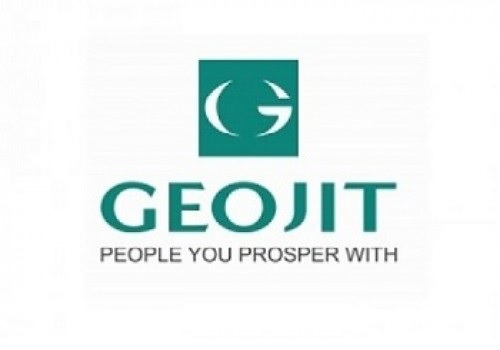Aluminium trading range for the day is 260.9-266.7 - Kedia Advisory

Gold
Gold prices eased, settling 0.23% lower at 122640, as expectations for a US interest rate cut continued to fade. The absence of key US economic data over the past six weeks, combined with hawkish signals from several Federal Reserve officials, has significantly dampened hopes for a December rate reduction. Fed Vice Chair Philip Jefferson stated that while employment risks have increased, the Fed should move “slowly” on further rate cuts. Markets now assign only a 43% probability to a 25 bps cut in December, down sharply from over 60% earlier this month. Investors now await the delayed US September jobs report and the Fed meeting minutes for clearer policy direction. Goldman Sachs noted strong central-bank buying, estimating 64 tons of purchases in September, reinforcing long-term diversification trends. Global gold demand rose 3% year-on-year to 1,313 tons in Q3, the highest quarterly level on record. Investment demand surged, with bar and coin purchases jumping 17%, and ETF inflows rising 134%. Central-bank buying increased 10% to 219.9 tons, while supply also hit record highs due to increased recycling and mine output. Technically, gold is under long liquidation, with open interest down 2.68% to 10829 and prices lower by 287. Support lies at 121255, with further downside toward 119870, while resistance is seen at 123530, and a breakout could take prices toward 124420.
Trading Ideas:
* Gold trading range for the day is 119870-124420.
* Gold fell amid dwindling expectations for a US interest rate cut as investors await the release of delayed US economic reports.
* Fed’s Jefferson noted that downside risks to employment have risen relative to upside risks to inflation.
* Traders will closely watch Thursday’s September jobs report for insights into the health of the US economy.
Silver
Silver prices slipped 0.43% to 154,644, weighed down by a stronger US dollar and diminishing expectations of a near-term Federal Reserve rate cut. The first US labor market update after the prolonged government shutdown showed initial jobless claims at 232,000, well above recent averages, highlighting lingering uncertainty. Fed Governor Waller reiterated the need for another 25 bps rate cut to cushion weakening labor indicators, citing soft hiring, subdued wage growth and weak consumer sentiment. On the fundamental side, India’s peak wedding season has supported physical demand, while concerns over potential US tariffs have added to global market unease. Silver holdings in London vaults rose 6.8% to 26,255 tons, aided by large inflows from the US and China, helping ease October’s liquidity squeeze. Meanwhile, ETP holdings surged 18% YTD, reflecting rising investor interest amid fears of stagflation, fiscal stress, and geopolitical risks. Despite this, global silver demand is forecast to fall 4% y/y in 2025 to 1.12 billion ounces, led by softer industrial offtake, jewelry, and bar-coin demand. Industrial demand is expected at 665 Moz, pressured by economic uncertainty and continued thrifting, even as PV installations hit record highs. Technically, the market is in long liquidation, with open interest dropping 3.57% to 12,423 alongside a 668 price decline. Silver now finds support at 152,120, with a break below opening the door to 149,600. Resistance is placed at 156,040, and a sustained move above this level could trigger a rise toward 157,440.
Trading Ideas:
* Silver trading range for the day is 149600-157440.
* Silver dropped pressured by a stronger US dollar and fading expectations of a Fed rate cut next month.
* Initial jobless claims in the US totaled 232,000, remaining firmly above the averages from the period since the end of the second quarter.
* Fed’s Waller signals support for another rate cut next month
Crude oil
Crude oil prices gained 0.75% to 5,360, supported by a rebound in demand expectations following the end of the U.S. government shutdown, which improved sentiment around near-term energy consumption. Supply-side risks briefly intensified after a Ukrainian attack disrupted operations at Russia’s Novorossiysk port, though loadings have since resumed. Meanwhile, U.S. sanctions on Rosneft and Lukoil are already pressuring Russia’s oil revenues, and Washington signaled readiness to widen sanctions to countries trading with Moscow—and potentially Iran—adding further geopolitical uncertainty. On the outlook front, Goldman Sachs expects oil prices to trend lower through 2026 due to a persistent supply surplus but noted that Brent could push above $70 in 2026/27 if Russian output declines more sharply. OPEC+ maintained its plan to increase December output by 137,000 bpd but signaled a pause in hikes during Q1 next year. The latest EIA data showed U.S. crude stocks rising sharply by 6.4 million barrels to 427.6 million, the biggest build since July, while gasoline and distillate inventories saw modest declines. U.S. oil production is now projected to average 13.59 million bpd this year, a fresh record, with only a slight dip expected next year. Technically, crude oil is in fresh buying, with open interest up 2.96% to 3,549 as prices gained 40. Support stands at 5,286; a breakdown could test 5,211. Resistance is placed at 5,413, and a move above this may push prices toward 5,465.
Trading Ideas:
* Crudeoil trading range for the day is 5211-5465.
* Crudeoil gains as the end of the U.S. government shutdown has accelerated expectations of brisk energy and oil demand.
* Expectations of a supply glut later this year and into 2026 as both OPEC and non-OPEC producers boost output.
* Traders are closely watching US sanctions against Russian oil majors Rosneft and Lukoil, set to take effect on November 21.
Natural gas
Natural gas prices fell 2.66% to 384.8, pressured by record U.S. output, comfortable storage levels, and expectations of lower demand over the next two weeks. The decline came despite record LNG feedgas flows, highlighting the dominance of supply-side pressure in the market. According to LSEG, Lower 48 production has averaged 109.3 bcfd so far in November, up from 107.3 bcfd in October and above the previous monthly record of 108.3 bcfd set in August. Strong output throughout 2025 has enabled storage to build well above seasonal norms, with inventories standing 4% higher than the five-year average. Warmer-than-normal temperatures across most of the U.S. through December 2 are expected to curb heating demand, although seasonal cooling should lead to a moderate uptick soon. LSEG projects total U.S. gas demand, including exports, to rise from 116.0 bcfd this week to 116.9 bcfd next week. The latest EIA storage report showed a 45 bcf injection, well above market expectations of a 34 bcf build, taking total stocks to 3,960 bcf, just 0.2% below last year but still comfortably above the five-year average. The EIA’s Short-Term Energy Outlook anticipates record production and demand in 2025, with dry gas output expected to rise to 107.1 bcfd before edging up further in 2026. Technically, natural gas is in long liquidation, with open interest dropping 10.81% to 13,090 as prices slipped 10.5. Support lies at 377.3, with a break exposing 369.7. Resistance is at 390.8, and a move above could lift prices toward 396.7.
Trading Ideas:
* Naturalgas trading range for the day is 369.7-396.7.
* Natural gas fell on record output, ample amounts of gas in storage.
* Pressure also seen amid forecasts for less demand over the next two weeks than previously expected.
* That price decline came despite record gas flows to liquefied natural gas export plants.
Copper
Copper prices fell 0.72% to 995.45, pressured by a stronger U.S. dollar as uncertainty persists over whether the Federal Reserve will cut rates in December. The focus now shifts to the delayed September payrolls data, which could influence policy direction. Adding to the bearish tone, LME copper inventories rose by 4,450 tonnes to 104,500 tonnes, the highest since early October. The cash-to-three-month LME spread showed a $36.50/ton contango, signaling comfortable near-term supply conditions. Some supply-side relief emerged after Freeport-McMoRan resumed partial operations at Indonesia’s Grasberg mine, previously halted due to a fatal accident in September. The International Copper Study Group (ICSG) projects a 178,000-ton refined copper surplus in 2025, shifting to a 150,000-ton deficit in 2026 as demand growth outpaces slowing refined output. Global mine production is expected to rise 1.4% in 2025 and accelerate to 2.3% in 2026, while refined copper usage is forecast to increase 3% in 2025 and 2.1% in 2026. ICSG’s latest monthly bulletin reported a 57,000-ton market surplus in July, compared with a 14,000-ton deficit in June. For January–July, the market posted a 101,000-ton surplus, down sharply from last year’s 401,000-ton surplus. In China, refined copper production rose 8.9% y/y in October to 1.2 million tons, though output fell 4.9% from September, hitting its lowest monthly level since November 2024. Technically, copper remains in long liquidation, with open interest down 12.24% to 6,660 as prices slipped 7.25. Support is seen at 990, below which 984.5 may be tested. Resistance is placed at 1001.1, and a breakout could lift prices toward 1006.7.
Trading Ideas:
* Copper trading range for the day is 984.5-1006.7.
* Copper fall pressured by a stronger dollar as Fed policymakers remained divided on a December interest rate cut
* LME copper stocks increased by 4,450 tons to 104,500 tons, the highest since October 1.
* China's refined copper production in October jumped by 8.9% from the prior year to 1.2 million metric tons.
Zinc
Zinc prices eased 0.33% to 301.1, pressured by weak macroeconomic signals from China and fading expectations of a December U.S. Federal Reserve rate cut. A stronger dollar weighed further on sentiment after multiple Fed policymakers expressed caution toward additional easing, citing lingering inflation concerns. The U.S. decision to begin releasing economic data delayed by the government shutdown, including the September jobs report, offered some clarity but did little to offset overall caution in the metals complex. From China, industrial indicators remained soft despite ongoing investment in infrastructure and green energy. October data showed signs of stabilizing prices, with the producer price index down 2.1% y/y, a slower decline than September, while the consumer price index rose 0.2%, ending a two-month contraction. Factory activity, however, continued to contract, with the official PMI at 49.0 and private PMI at 50.6, missing expectations. LME zinc inventories remain historically low at 35,875 tons, while SHFE stocks have fallen 8% in recent weeks to 100,208 tons, highlighting tightening availability across key regions outside China. On the supply side, global refined zinc production is forecast to rise 2.7% to 13.8 million tonnes in 2025, while the ILZSG reported a 47,900-ton global surplus in August, contributing to a 154,000-ton surplus in the first eight months of 2025. Technically, zinc is in long liquidation, with open interest dropping 14.33% to 2,595 as prices slipped 1. Support lies at 298.7, with further downside to 296.2 if breached. Resistance is at 303, and a breakout may push prices toward 304.8.
Trading Ideas:
* Zinc trading range for the day is 296.2-304.8.
* Zinc dropped after weak economic data from China fanned concerns over demand.
* Some Fed policymakers have expressed concerns about inflation, questioning whether another rate cut before the end of the year is necessary.
* U.S. said it would start to release economic data delayed by the government shutdown, including the September jobs report.
Aluminium
Aluminium prices declined 1.41% to 263.1, tracking a broader retreat in risk assets ahead of key U.S. economic data releases. Despite the pullback, downside remained limited as concerns persisted that Chinese smelters are approaching government-imposed capacity ceilings, which could restrict future supply. October’s primary aluminium output reached 3.8 million tonnes, up 0.4% year-on-year but sharply lower by 9% from September, signaling tightening output momentum. Weak macroeconomic data from China continued to cloud demand prospects, though sentiment improved on Beijing’s renewed growth-support measures and progress in reopening U.S. government operations. Supply-side issues also underpinned the market. The Grundartangi smelter in Iceland suspended one potline due to electrical failure, while Century Aluminium curtailed production by two-thirds. Alcoa’s decision to shut its Kwinana alumina refinery amid deteriorating bauxite ore grades added further strain to the global supply chain. SHFE aluminium inventories rose 1.40% from last Friday, though Japanese port stocks declined 3.6% to 329,100 tonnes. Meanwhile, China’s unwrought aluminium exports in July climbed to 542,000 tonnes, while October imports rose 10.4% y/y to 350,000 tonnes, reflecting strong domestic demand across transportation, construction, and packaging sectors. Cumulatively, imports for January–October stood at 3.36 million tonnes, up 6.1% year-on-year. Forecasts remained mixed: Goldman Sachs lowered its LME aluminium price outlook to $2,350/t for Q4 2026, citing slowing demand and cost deflation. Technically, aluminium is in long liquidation, with open interest down 14.9% to 2,045. Support is at 262.1, with further downside toward 260.9, while resistance is at 265, and a break above could push prices to 266.7.
Trading Ideas:
* Aluminium trading range for the day is 260.9-266.7.
* Aluminium dropped tracking a broader pullback from risk assets ahead of key US data releases.
* China's imports of unwrought aluminium and aluminium products rose 10.4% in October from a year earlier.
*Aluminium stocks at Japanese ports fell to 329,100 metric tons in October, a decrease of 3.6% from the previous month.
Turmeric
Turmeric prices witnessed a decline of 0.89% to settle at 14,256 amid higher sowing acreage supported by favorable rains during the current season. Despite this downside, market sentiment remains cautiously firm as crop damage due to excessive rainfall in Maharashtra, Andhra Pradesh, and Karnataka has restricted sharper declines. The continuous rains in Erode have led to disease outbreaks, complicating storage conditions due to high humidity, while depleted farmer stocks in Warangal and limited fresh arrivals further support the market tone. Production prospects, however, indicate a notable acreage increase of 15–20% for the 2024–25 season, with the total area expanding to 3.30 lakh hectares compared to 3 lakh hectares last year. At Duggirala, strong buyer interest in fresh arrivals continues, with superior quality produce commanding a price premium. Around 50–55% of the new crop has already been traded, and with arrivals expected to continue till June, the market activity is projected to remain vibrant. On the export front, turmeric shipments from April to August 2025 rose by 3.31% year-on-year to 80,156.56 tonnes, while August exports climbed 7.27% over last year, signaling steady overseas demand. Technically, the market is under long liquidation as open interest fell by 2.36% to 10,535 contracts. Immediate support is placed at 14,108, below which prices may test 13,958. Resistance is observed near 14,454, and a breakout above this could propel turmeric prices toward 14,650 levels.
Trading Ideas:
* Turmeric trading range for the day is 13958-14650.
* Turmeric dropped amid increase in acreage due to favourable rains during the current sowing season.
* Turmeric stocks held by farmers in Warangal are nearly depleted, with no fresh arrivals over the past two days.
* However downside seen limited as yields in Maharashtra, Andhra Pradesh and Karnataka have been affected due to rains.
* In Nizamabad, a major spot market, the price ended at 14827.95 Rupees dropped by -0.24 percent.
Jeera
Jeera futures declined by 0.89%, settling at 21,180, pressured by comfortable availability and subdued export interest amid sufficient old stock in the domestic market. Despite the downside, the fall remained limited as uneven rainfall and delayed sowing continued to lend underlying support. Gujarat is witnessing one of the most delayed sowing seasons in years due to erratic rain, making field preparation sluggish. At the Unjha market, arrivals stayed muted, while premium-quality cumin fetched a higher price due to tight availability. Export demand from Gulf countries and China has marginally improved, though still sensitive to price and freight fluctuations. From April to August 2025, India’s Jeera exports fell 17.02% year-on-year to 85,977.39 tonnes, while August shipments rose 3.24% over the previous year, signaling tentative recovery. Domestic production for the season is projected at 90–92 lakh bags against last year’s 1.10 crore bags, with Gujarat contributing around 42–45 lakh bags and Rajasthan 48–50 lakh bags. Lower global output from China, Syria, Turkey, and Afghanistan has tightened international supply, partially balancing weak global demand. Additionally, the GST Council’s move to reduce the GST rate to 5% is expected to boost FMCG-linked demand and domestic consumption. Technically, Jeera is under fresh selling pressure as open interest rose by 1.04% to 3,495 contracts. Immediate support is seen near 20,840, below which prices may retest 20,510. Resistance lies at 21,710, and a breakout above could propel prices toward 22,250 levels.
Trading Ideas:
* Jeera trading range for the day is 20510-22250.
* Jeera dropped due to comfortable supplies and tepid export interest amid adequate existing stocks.
* However downside seen limited as weather issues and delayed sowing are keeping cumin prices strong.
* Farmers are struggling to start sowing due to uneven rainfall.
* In Unjha, a major spot market, the price ended at 21151.3 Rupees dropped by -0.89 percent.
Views express by all participants are for information & academic purpose only. Kindly read disclaimer before referring below views




















